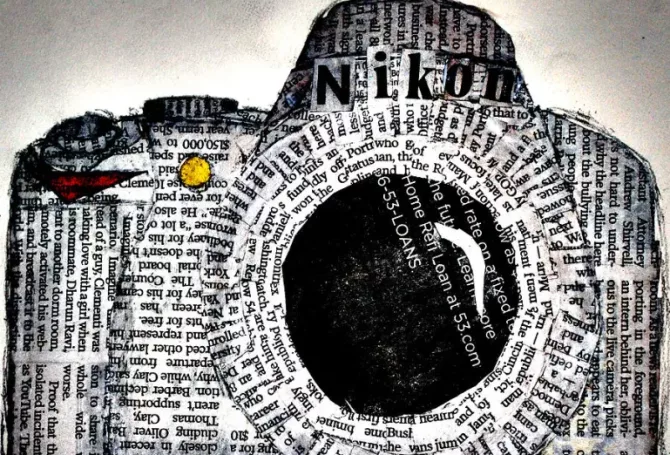
Killer First Sentences Can Match Images in Attracting Readers
A picture may be worth 1,000 words. The trick is making 1,000 words a worthy partner for a picture.
An essay, column or book chapter can run around 1,000 words. Writing 1,000 words per day is a recommended exercise to improve writing skills. The length of 1,000 words is enough to examine a topic, mount an argument or tell a story. It’s also long enough to create a confusing blizzard of words and forest of thoughts.
The good news is that 1,000 words represents roughly the attention span of an interested reader. The bad news is that 1,000 words can seem daunting for a writer unsure of what to say or how to say it.
A piece at 1,000 words is ideal for writers who have something to say and the skill to say it. For those unsure of their 1,000-word writing skills, here are some guidelines:
Killer First Sentences
Killer first sentences or paragraphs are the invitations to read the remaining 970 words. When a reader invests four to five minutes to read 1,000 words, they expect to get valuable information, a well-argued point of view or a good story.
Identify Your Point
The first task of the writer is to nail down a subject that is informative, insightful or entertaining. For essayists, a good place to start is a thesis statement that captures the nub of your subject in 30 words or less. Columnists and op-ed writers should do the same by writing a captivating lead paragraph. Storytellers follow the example with a paragraph that draws in an audience with human interest.
Be Interesting
Readers have lots of choices. The writer’s job is to produce something that’s interesting – highlight an overlooked storyline, provide a clear explanation or tell a story that makes people smile. Take a cue from good photography and find an arresting angle, an unexpected scene or a human moment.
Create a Clear Path
Reading 1,000 words can be harder than you think when the path through the words is hard to follow. The writer’s job Is to create a logical order for their facts, arguments or story lines. Smooth curves are better than sharp turns. Provide answers for questions that a typical reader might ask. Avoid drifting off the path into tangents or extraneous details.
Write with Word Pictures
The reason why a picture is worth a 1,000 words is because our brains see and store images quicker than words. To compensate, writers need to think like photographers and write word pictures using metaphors or familiar phrases that kindle instant recognition in the minds of readers.
Employ Vigorous Sentences
People watch sporting events because of the action. Follow that example by using active verbs and fresh expressions to grab and sustain reader interest. Vigorous sentences tend to be short, impactful and uncomplicated. Say what needs to be said and stop. Stopping is the hard part for many writers.
Editing is a sobering task. No matter how great your think you write, it invariably can be better with a second, third or fourth look.
Edit Like a Demon
Ernest Hemingway paved the way for modern fiction writing with his commitment to demon-like editing of his writing. His glib advice to write drunk and edit sober is half right. Regardless of your condition when writing, editing is a sobering task. No matter how great your think you write, it invariably can be better with a second, third or fourth look. You may only change one word, but that change can make all the difference in readability and meaning.
Writing Like Pictures
A picture worth a 1,000 words can be improved by having the picture and words reinforce each other. A photograph, chart or infographic can deliver instant information, which the accompanying 1,000 words can explain and put into context. Visual communications is rooted in the idea of assaulting all the senses of viewers and readers to boost interest and comprehension and appeal to widest range of audiences.
Counting to 1,000 Words
Word helps you keep track of how many words you have written. That’s useful after you finish a first draft, not as guide of how to add filler to reach the 1,000-word goal. If you have trouble finding your 1,000 words, chances are you haven’t fully vetted your idea or story – or you have a subject that doesn’t merit 1,000 words. Either way, keep at it and add value, meaning or fun, not fluff.
Don’t Punt on Writing
Many topics are tough to write about, especially in the space of 1,000 words. Punting an assignment because it’s difficult won’t make you a better writer – or a good team player. Taking on tough assignments is a trial by fire that sharpens writing skills. Be like the punter standing on the goal line ready to kick the ball into the other team’s side of the field.
Managing Issues has offered several recent posts to improve writing skills. Check them out:
https://cfmadvocates.com/turn-communications-into-melodies-for-the-eye/
https://cfmadvocates.com/how-to-get-rid-of-annoying-filler-phrases/
https://cfmadvocates.com/brutal-brevity-to-convey-essential-facts/
https://cfmadvocates.com/turning-press-releases-from-drivel-to-riveting/
https://cfmadvocates.com/songwriters-compose-conversations-with-listeners




